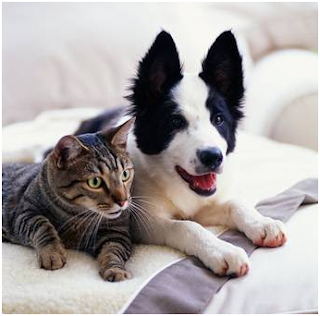Fire Safety & Prevention for Families with Pets
Courtesy of Life's Abundance Blog 6/20/19
When my mother was five years old, her house burned down due to a stove that was accidentally left on overnight. Decades later, she still remembers that night as if it were yesterday … the smoke filling the hallways, the feel of the grass under her bare feet. It happened, she said, so fast. Fortunately, everyone made it out alive.
When it comes to fire safety, most of us know the basics: pre-plan evacuation routes and during a fire, don’t open doors without first feeling for heat. But do your plans include your pet? An estimated 500,000 pets are adversely affected each year by house fires. For this reason, July 15th is designated as National Pet Fire Safety Day in order to raise awareness of pet safety during house fires and help you prepare so everyone is protected!
Safe Pet Evacuation
The first part of your pet fire safety plan should be to review your evacuation protocol, if you have one. And if not, today’s the day to make one!
1. Designate specific people for specific pets. Knowing in advance who grabs Oliver’s leash and who gets Fiona’s cat carrier streamlines the evacuation. Ideally the leashes and carriers should be kept in easily accessible locations.
2. Know your evacuation routes. A second story window is not going to be an accessible route for a large dog, so plan for exits pets can use whenever possible. It is important to remember that family members should never put themselves in danger for a pet, as difficult as that may be. First responders are trained to rescue our four-legged family members when it is unsafe for us to do so.
3. Display a window cling. Speaking of first responders, did you know you can put a vinyl adhesive sticker near your front door that alerts firefighters that there are pets in your home? Many fire stations make these available to the public, or you can easily shop for them online. Make sure they are updated regularly so first responders know how many pets are living in the home, should an emergency arise when you are away or incapacitated.
4. Keep collars on at all times. This is good practice in general, but in the specific case of house fires this makes it much easier for a firefighter to safely bring your pet out of the house. And, should they escape during an evacuation (not uncommon in times of extreme distress), he or she will have their contact information readily available on their tags.
Fire Prevention
Did you know dogs and cats are blamed for about 1,000 house fires every year? No, these are not deliberately destructive acts of arsonist-inclined companion animals. But still, yikes! Take the time to employ a few preventive strategies to ensure your dog or cat doesn’t inadvertently cause a flammable disaster.
1. Use flameless candles. Pets and open flames are a dangerous mix, particularly when you have a curious cat who likes to knock things off the coffee table. Flameless candles powered by LEDs are a pretty and safe alternative. If you really want to light that scented candle, make sure your pets are never left unattended in the same room.
2. Use knob covers on the stove. Did you know that stove tops are the number one way pets accidentally start fires? One minute they’re trying to get a look over the counter to see if there’s any food up there, the next thing you know you’re getting a call from the fire department while you’re in the middle of a work meeting. Knob covers- the same type used to prevent toddlers from starting the stove- work like a charm.
3. No glass on wooden decks. Many people like using glass bowls for pet dishes. There’s nothing wrong with that, but glass can act like a magnifying glass and set a wooden deck aflame. It might seem crazy, but it happens! Switch the bowls out for ceramic or plastic, and you’re all set.
4. Use a monitored security system or smart alarm. Traditional smoke alarms are a vital component of fire safety, but they’re only useful for people in the house at the time. Pets home alone have no way of alerting us if there’s a problem, but monitored security systems can react quickly before a fire gets out of hand no matter where you are in the world. Conversely, a good alternative to monitored systems are smart alarms. Today’s smoke and carbon monoxide detectors function not only as in-house alarm systems, they can also send text and push notifications wherever you’d like. Our system controls the thermostat, the smoke detector, security camera, and tells us if one of the kids left the front door open.
We’ve come a long way since that chilly night decades ago where my mother watched her house disappear. With today’s safety precautions, there’s a lot you can do to make sure your family doesn’t endure a similar tragedy. Or if you do, that everyone makes it out quickly and safely. By taking steps now to minimize the dangers and to develop a well-defined plan, everyone in your home can have peace of mind and rest a little easier.
Dr V
Dr. Jessica Vogelsang, DVM




No comments:
Post a Comment